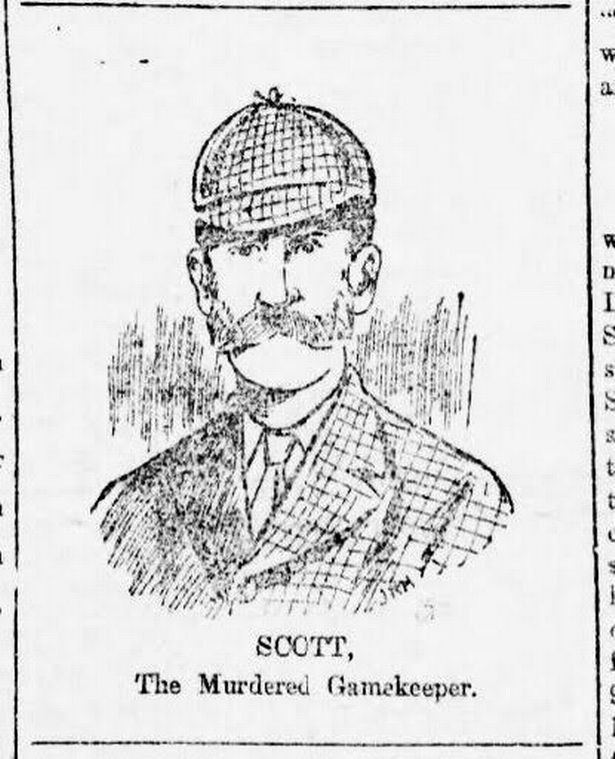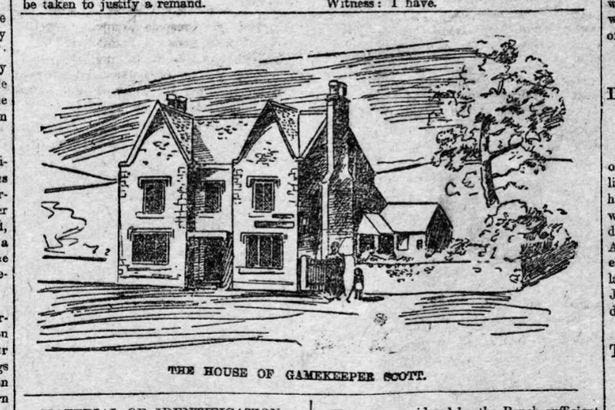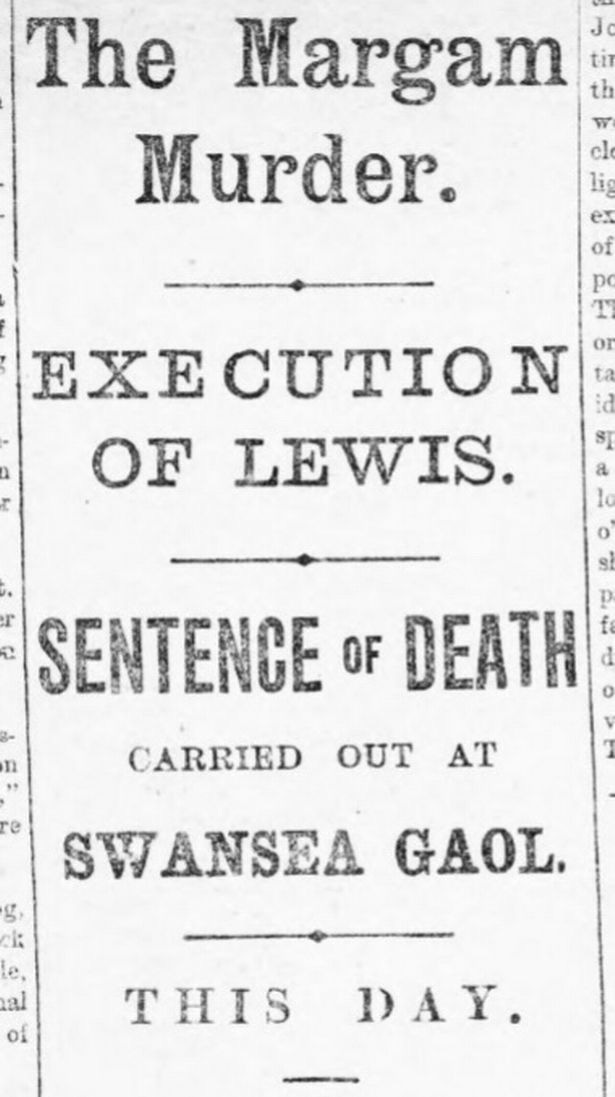The Margam Murder
During the long summer of 1898 the murder of a Margam gamekeeper gripped the nation, drawing crowds to the area and packing out court rooms. This is the tragic tale of the murder of Robert Scott.
Home of the Mansel family for over 400 years, the Margam estate was a haven of greenery in the heart of industrial South Wales. Unsurprisingly the estate, filled with deer, rabbit and birds, was a popular draw for poachers in the West Glamorgan area.
During the Welsh Coal Strike of 1898, many colliers, unable to earn money and desperate to support their starving families, turned to poaching. As a correspondent in a local paper put it “There would have been much keener distress in Maesteg during the recent stoppages of the pits if fur and feather had not contributed freely towards the support of the families of the unemployed colliers.”
The increase in poachers meant that Margam’s small team of gamekeepers had to be extra vigilant.
Robert Scott
Robert Scott was a 39 year old Scot who worked as a gamekeeper at the Margam Estate. He lived with his wife and child in a stone cottage next to Margam Post Office.
During his time at Margam, Scott had earned a reputation as a skilled and determined gamekeeper. He had also had numerous encounters with poachers.
On the evening of the 9th of June Scott was patrolling the estate with young underkeeper Robert Kidd. Aware of the increase in poachers, Scott was armed with a stick. Also on partol that evening was P.C. Hawtin, a private constable employed by the Margam estate.
It wasn’t long before the gamekeepers noticed a man coming down the mountain, about a mile from their position. Scott sent Kidd to find Hawtin while he kept watch.
Together the three men slowly approached the suspected poacher. Reaching the wall that separated Cwm Phillip from the mountain they decided to split up and attempt to surround the poacher. Scott would continue towards the farmhouse while Kidd and Hawtin took the mountain wall route to the gate before climbing the mountain slightly, placing them above the man poacher.
As Hawtin and Kidd climbed the mountain, Hawtin kept watch of the poacher through his binoculars. He would lose sight of the man as he approached the turnip field gate. Scott, who was last seen heading in the same direction, was also out of sight.
Later, a labourer named White would describe a man in a long coat and hat carrying a double-barreled gun walking through the lower pasture away from Cwm Phillip. It seemed that the poacher had seen Scott and changed direction.
Unfortunately, Scott had already seen the man and had doubled back on himself, coming face to face with the poacher near a gap in the wall at the bottom of the second enclosure.
Finding himself trapped, and realising that he would be recognised, the poacher raised the gun and shot Scott in the face.
The shot was not fatal; instead Scott was able to crawl along the gutter at the bottom of the wall towards a second gap. Here, he collapsed, exhausted and badly injured.
Unfortunately for Scott, the poacher was not finished. He followed the stricken gamekeeper and, seeing him on the floor, took aim for a second time, delivering the fatal shot. Later, the man would claim that this was a mercy shot, to prevent the gamekeeper from suffering too much.
The poacher made his escape down the dingle towards Brombil farm, discarding the gun on the way. Meanwhile, Hawtin and Kidd, who had heard the shots, were desperately searching for Scott.
With darkness already falling, the men, who were not carrying torches, decided to retrace their steps. Arriving at Scott’s cottage they were informed by his wife that he had not yet returned. Worried, the men resumed their search.
A Grim Discovery
The following morning Hawting and Kidd resumed their search, aided by other gamekeepers. Between 8 and 9 o’clock they made their grim discovery; Robert Scott’s body was found lying in a gully near Blaenmallwg farm. His face had been severely disfigured by the gunshot wounds and his body also showed signs of assault.
The police were quickly summoned and began a murder investigation. Meanwhile, to protect his wife from the gruesome sight, Vicar Williamson of Margam Abbey formally identified Scott’s body.
A police search of the area recovered a grey cloth cap from close to the scene. Meanwhile a number of people employed on the estate gave descriptions matching that of the poacher Scott, Kidd and Hawtin had followed in the area in the hours following the murder.
Within a few hours the police made an arrest. Henry Jones was well known to both the authorities and Margam’s gamekeepers; 2 years earlier he had been caught setting rabbit snares on the estate.

While Jones was questioned, word of the murder quickly spread. In the days that followed, large crowds, having read the press reports, flocked to the mountainside to view the crime scene. On the Sunday, 4 days after the murder, “some thousands” visited the area; press reports describe how the road to the estate from Port Talbot was “alive with traps, brakes, bicycles and pedestrians”. An enclosure wall, where blood splatters could supposedly be seen, was of particular interest.
One press report describes how the arrival of a “contingent of sightseers from Maesteg ” sent the crowd into “a ferment of excitement with the intelligence that another arrest had been made.”
The second man to be arrested was Joseph Lewis, a 32 year old originally from Pontyberem, Carmarthenshire. Lewis, sometimes known as Joe Harries, was lodging with Henry Jones in Union Street, Maesteg.
In the weeks following his arrest, Lewis gave several different versions of his movements on that night. First claimed to have spent the day fishing in Aberavon before spending the night in a house in Taibach. Later, he admitted to being on the estate, poaching, but claimed to have run away when he heard gun shots. He also reportedly told an old friend “I never dreamt of injuring Scott but simply went out to get a rabbit or two; times were so bad. I told Scott three times to stand back, and had he done so nothing of this would have happened. But he rushed me with his stick, and what I did was self-defence.”
Lewis on Trial
On the Monday after their arrest, Jones and Lewis were charged; Lewis with murder and Jones as his accomplice. Reflecting the public interest in the case, crowds filled the streets to watch as the prisoners were taken by train to Swansea.
On the same day, Scott was buried in Margam. As a mark of respect, and to allow his colleagues to attend the funeral, work paused on the estate. A crowd of around 800 gathered outside his home to follow the cortege to Margam Abbey church.
In the weeks leading up to the trial, the case against Jones was dismissed.
Lewis’ trial began on the 9th of August at the Glamorgan Summer Assizes in the original Swansea Guildhall. Large crowds gathered in the public gallery and outside the building to follow every detail. Lewis seemed to enjoy the attention, regularly making signs and “pantomime” gestures to the South Wales Poster reporter in the public gallery depending on how he thought the trial was going.
While the defence sought to present Lewis as a “cheery, happy-go-lucky” fellow who was quick to make friends the case for the prosecution revealed him to be a violent man with a criminal past. As well as numerous arrests for theft, he had deserted from the army and abandoned a young woman who was pregnant with his child.
During the trial, 34 witnesses were called to testify; amongst them was the man originally charged alongside Lewis. Jones told the court that while they were in custody, Lewis had told him where he had hidden the gun. The empty weapon was later found at the location Jones described.
Other witnesses, such as William Maddocks, placed Lewis at the scene of the crime. Maddocks told the court he was standing at the gate of Brombil farm on the evening of Scott’s murder and spoke to Lewis as he walked off the mountain.
John Griffiths, a haulier from Maesteg, told the court that he had seen Lewis leaving his lodgings on the day in question wearing a long grey cap and brown coat. Griffiths would also tell the court that Lewis had confessed to killing Scott.
Further damning evidence came in the form of traces of blood found on the bottom of Lewis’ trousers.
On the second afternoon, and with witnesses still to be called, the prosecution decided to end their case early, telling the jury that “the case had been made out beyond the possibility of reasonable doubt.” In response, the defence announced they would present no evidence.
The jury took less than 3 hours to decide Lewis was guilty. Lewis was sentenced to death and taken to Swansea prison to await his fate.
The Final Days of The Condemned Man
To satisfy public interest in the case, the press continued to report every element of Lewis’ final days, including that he “ate heartily”, was allowed to smoke and even which brand of tobacco he enjoyed.
For his part, Lewis not only seemed to accept his fate, but also found God; he would regularly read the bible, in both Welsh and English, sing hymns and recite prayers from the Book of Common Prayer.
On the 29th of August, James Billington arrived in Swansea. The hangman had travelled from Bolton with his son who also acted as his assistant. The men spent the night at Swansea prison while a group of evangelical Christians gathered at the prison wall, outside the condemned man’s cell, to sing hymns. Lewis was apparently so touched by this gesture that he asked a guard to thank the group and requested the hymn “lead Kindly Light”.
The following morning dawned cloudy and grey; a heavy mist shrouded the town. Despite the weather, by 7:45 over 5,000 people had gathered outside the prison, bringing traffic in the area to a halt. Inside, Lewis enjoyed his final breakfast of tea and bread and butter before being taken to the prison gallows.
Billington carried out his grim task efficiently and at 8 am a black flag was hoisted up the prison flag pole. Interestingly this was the last time that the black flag was flown at Swansea prison; authorities had come to the conclusion that the spectacle encouraged morbidly curious crowds to gather.
Outside the crowd began to disperse.
As the crowd dispersed, Lewis’ body was prepared for burial inside Swansea prison alongside other executed men.





